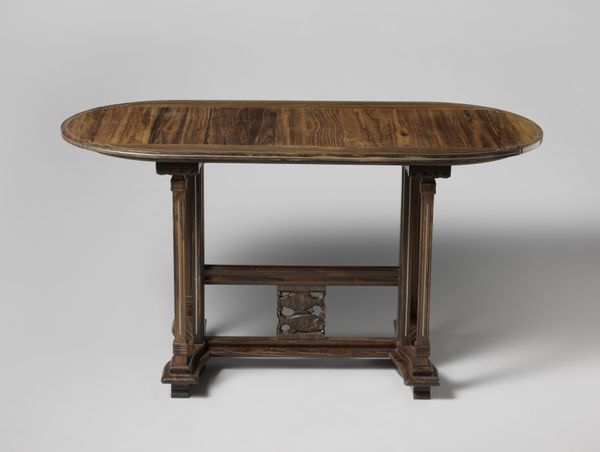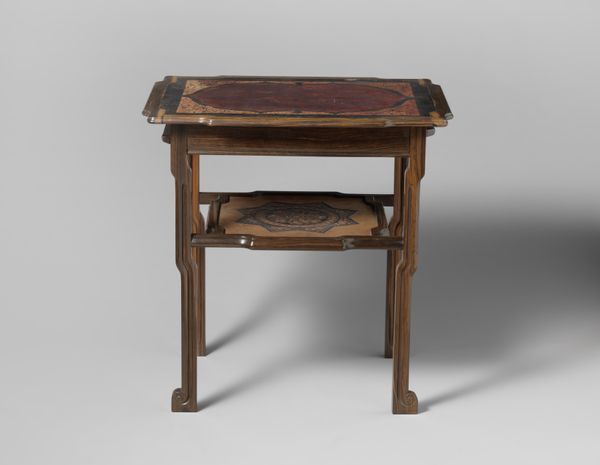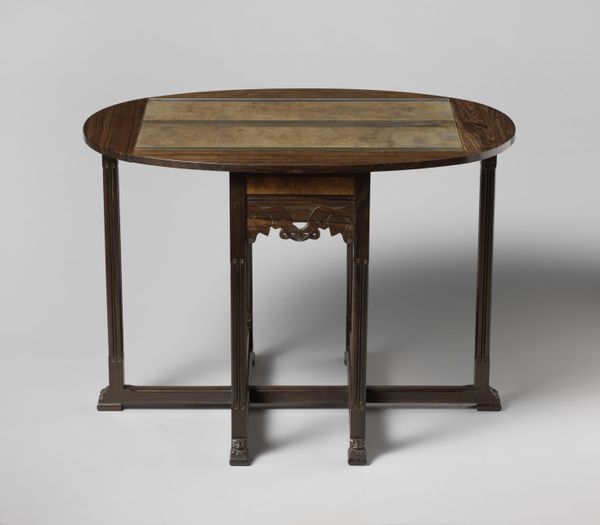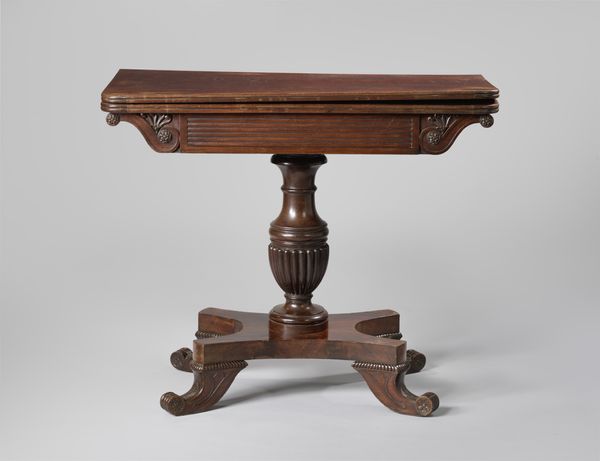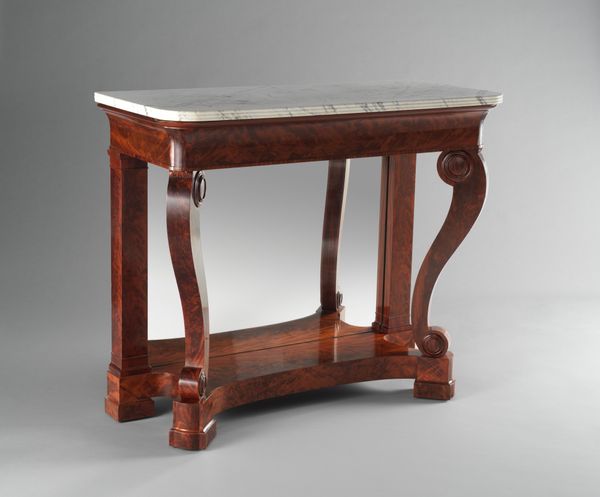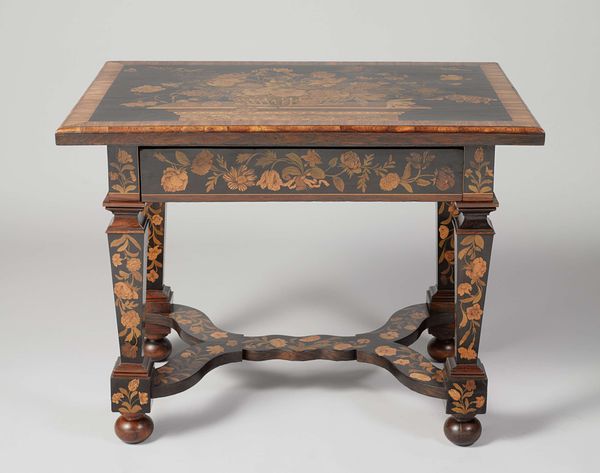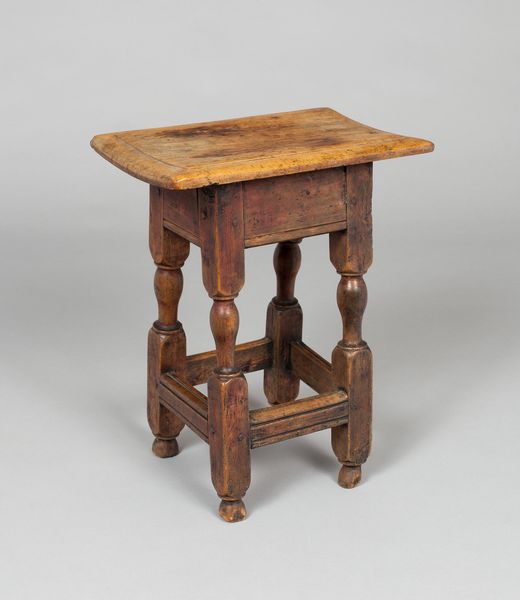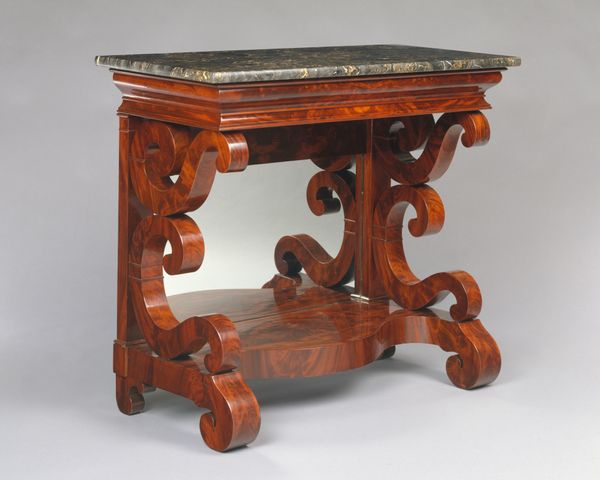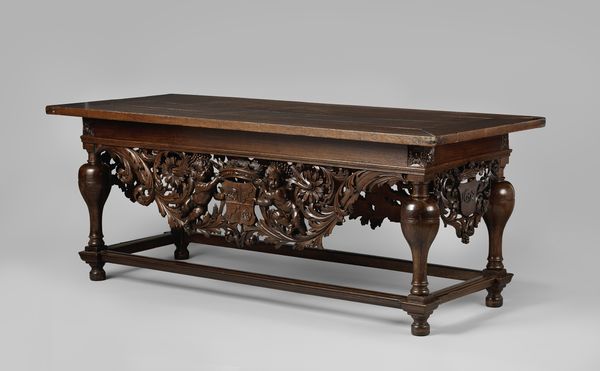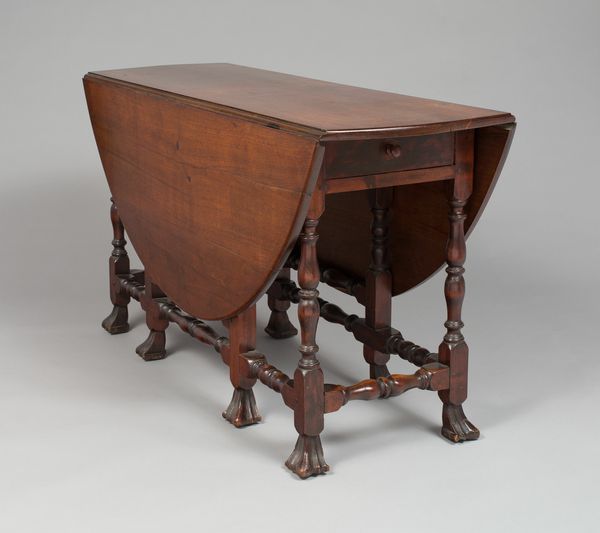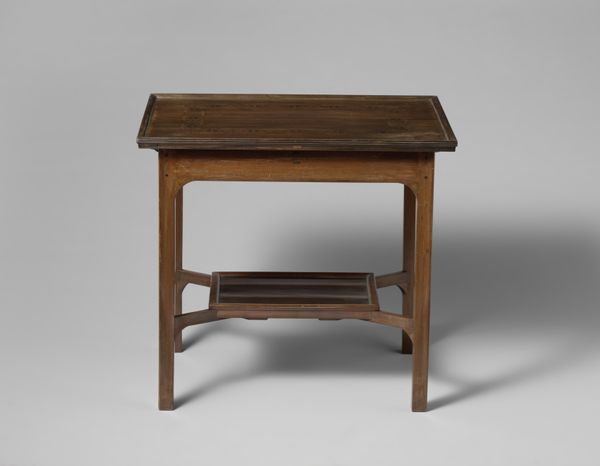
Tafel van coromandelhout met een rechthoekig met linoleum ingelegd blad 1920
0:00
0:00
carving, wood
#
carving
#
asian-art
#
wood
#
decorative-art
Dimensions: height 75.0 cm, width 120.0 cm, depth 60.5 cm, weight 36 kg
Copyright: Rijks Museum: Open Domain
Editor: This is "Tafel van coromandelhout met een rechthoekig met linoleum ingelegd blad" – or Coromandel wood table with a rectangular linoleum-inlaid top, made around 1920 by Carel Adolph Lion Cachet. It's currently housed in the Rijksmuseum. The intricate carvings contrast so strikingly with the smooth, cool linoleum. What's your take on this piece? Curator: Formally, the object offers a compelling study in contrasts. The geometric planes of the linoleum tabletop sharply juxtapose with the ornately carved, organic forms of the Coromandel wood base. This creates a visual tension that is aesthetically rewarding. Notice also how the rectilinear supports give way to curvilinear embellishments around the joining stretchers. How does that contribute, do you think? Editor: It feels almost like the artist is deliberately playing with opposing design languages – a push and pull between simplicity and complexity, perhaps? Curator: Precisely. Furthermore, the color palette – the deep browns and grays – is restrained. The limited range forces the eye to concentrate on the tactile qualities, the contrast between the matte linoleum and the intricately carved wood, a sensory, not a visual, experience, don’t you agree? The play of light and shadow across the carved surfaces adds to the drama. It speaks to a very careful consideration of form and material. Editor: It definitely makes you think about how materials interact and the visual impact they can have on each other. Thanks for pointing out those elements! Curator: My pleasure. Considering elements of shape, materials and their placement allows a deep examination into art's formal components, leading to the appreciation of new depths within a work.
Comments
No comments
Be the first to comment and join the conversation on the ultimate creative platform.
